The Burrow

Giving birth is said to be one of life’s most magical moments, but it can also be a stressful experience. From accessing maternity packages and affording healthcare fees, to planning your route to the hospital in record time, there is a lot to consider.
Several factors can impact the birthing experience, and countries around the world approach pregnancy in several different ways. For those that have health insurance, your baby’s birth and other related services may also be covered, depending on the specific policy that you have.
As health insurance experts here at Compare the Market Australia, we have analysed the benefits and difficulties of giving birth in different countries around the world to reveal which country offers the best experience.
While we recognise that the Australian public health system offers childbirth for free, we also understand that there are many expectant parents who choose to give birth through the private health system. If that’s the case for you, it’s important to consider your options by comparing health insurance providers.
Insurance can assist with any unexpected fees or costs that come with giving birth in Australia’s private system, providing new parents with peace of mind, so they can enjoy their baby bubble for as long as possible.
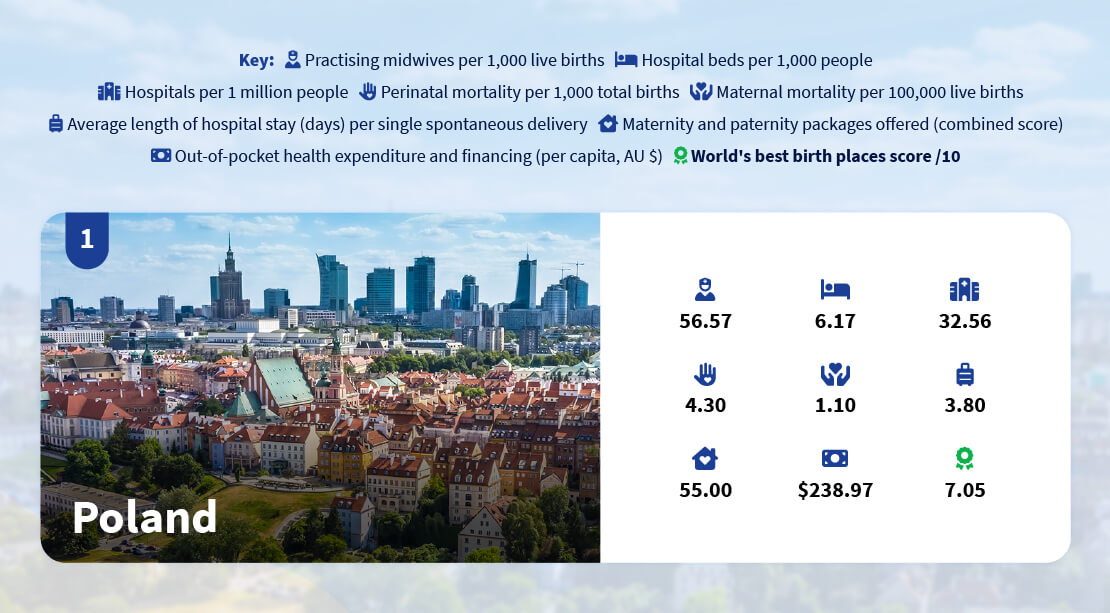
Recognised as the best place to give birth worldwide is Poland. According to the research, Poland is second for out-of-pocket health expenditure and financing, meaning that people generally pay less for healthcare. Healthcare in Poland is generally paid for via health insurance, but when it comes to giving birth, grants are available.1
The country also ranked highly for the maternity and paternity package offerings coming in 9th place out of 36.
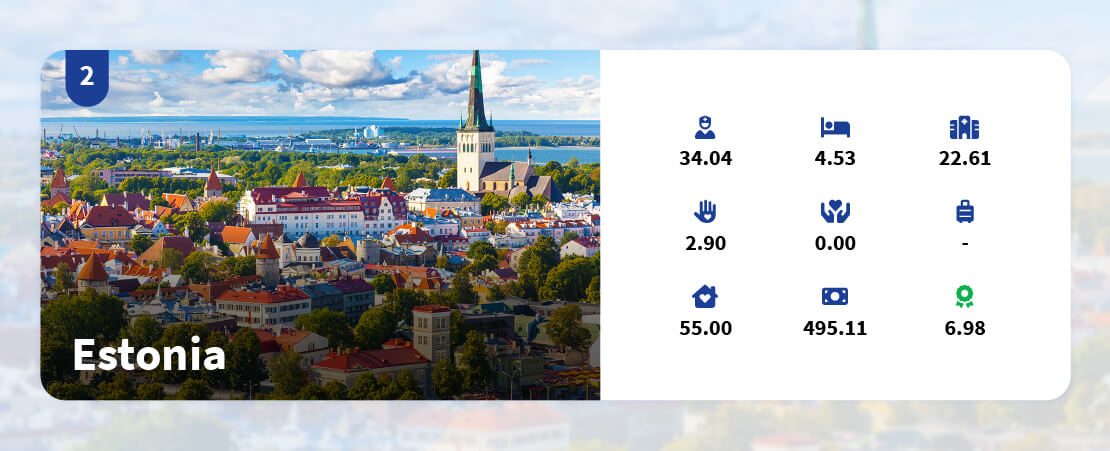
In some cases, those giving birth in Estonia are entitled to benefits that can include an allowance for childcare and can cover parental leave.2 This may be one reason that Estonia ranked highly for maternity and paternity packages offered, which contributed to a high rank overall.
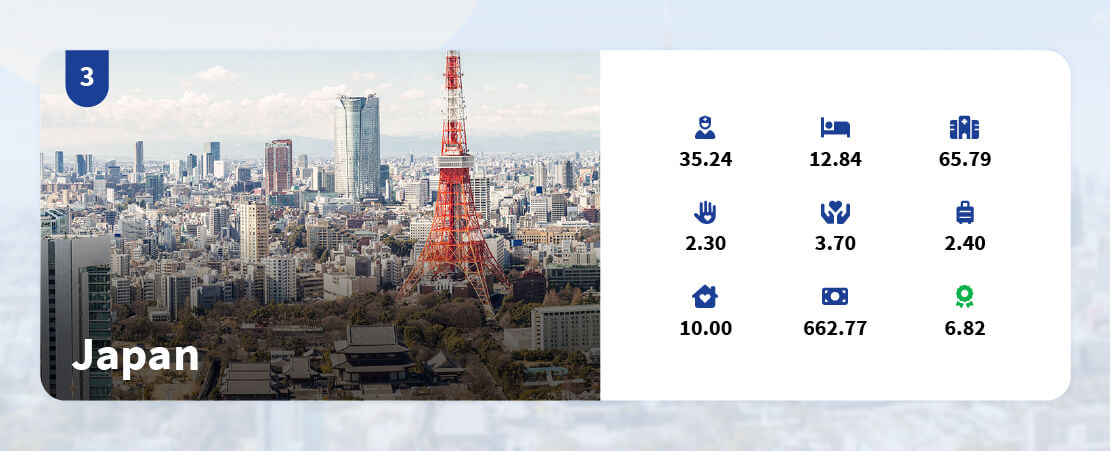
Japan took the third position, ranking 1st for the number of hospital beds per 1,000 people and taking the 3rd position for the number of hospitals per 1 million people. Japan was let down by its maternity and paternity packages, offering only 14 weeks of maternity leave to mothers with 9.4 weeks at full rate, and 0 weeks paternity leave.
The healthcare system in Japan is referred to as a Statutory Health Insurance System (SHIS) that protects 98.3% of residents. The system also takes into consideration individuals’ age and income to ensure that any out-of-pocket payments are capped. Due to this system, Japan scored highly.3
The full rankings can be found below.
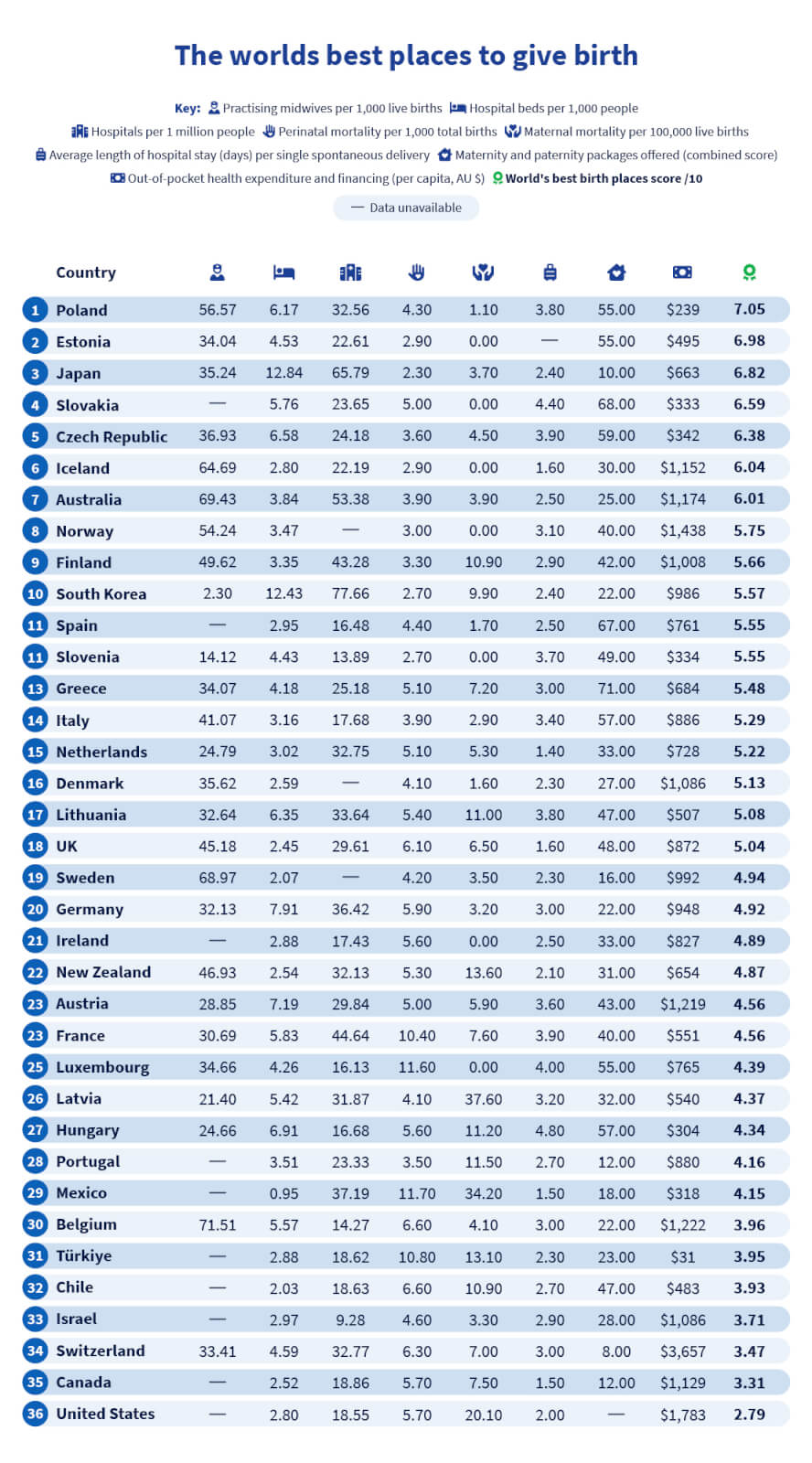
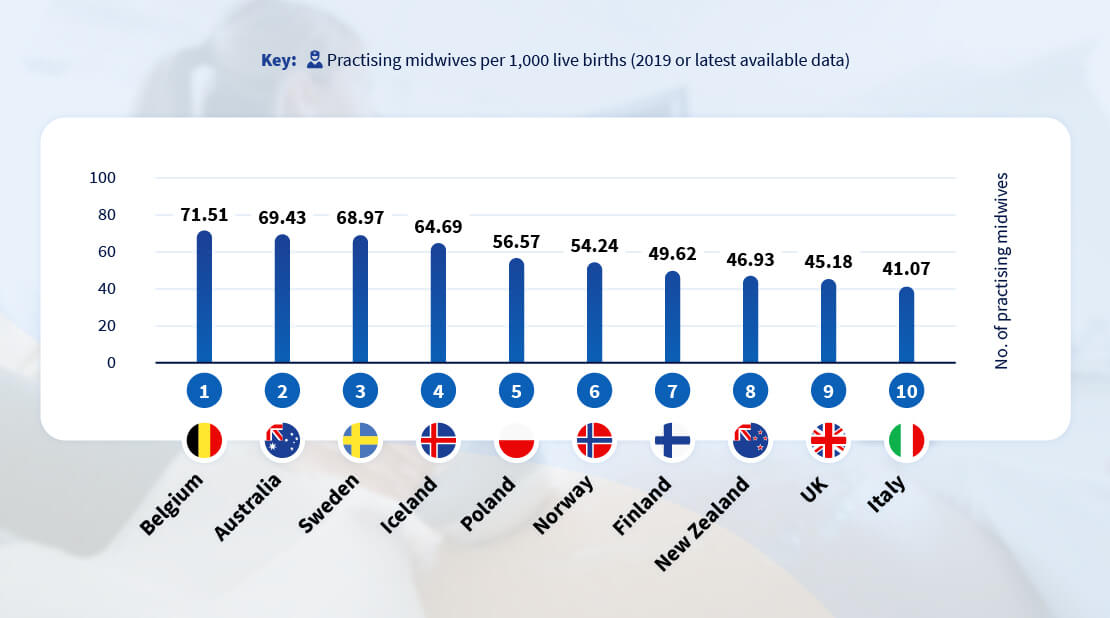
Belgium scored the highest for the number of midwives per 1,000 live births, but came in 11th position for the number of hospital beds per 1,000 people. Conversely, the country scored within the bottom ten when looking at paternity and maternity packages offered.
In the second position is Australia with 69.43 practising midwives per 1,000 live births. When looking at the additional factors, Australia also ranked highly for the number of hospitals per 1 million people at 53.38 and the average length of hospital stays at only 2.5 days.
Sweden ranks in the third position when looking at the number of practising midwives and came in at 19th overall. Sweden ranked highly for several factors but fell short when viewing the number of hospital beds per 1,000 people, coming 34 out of 36.
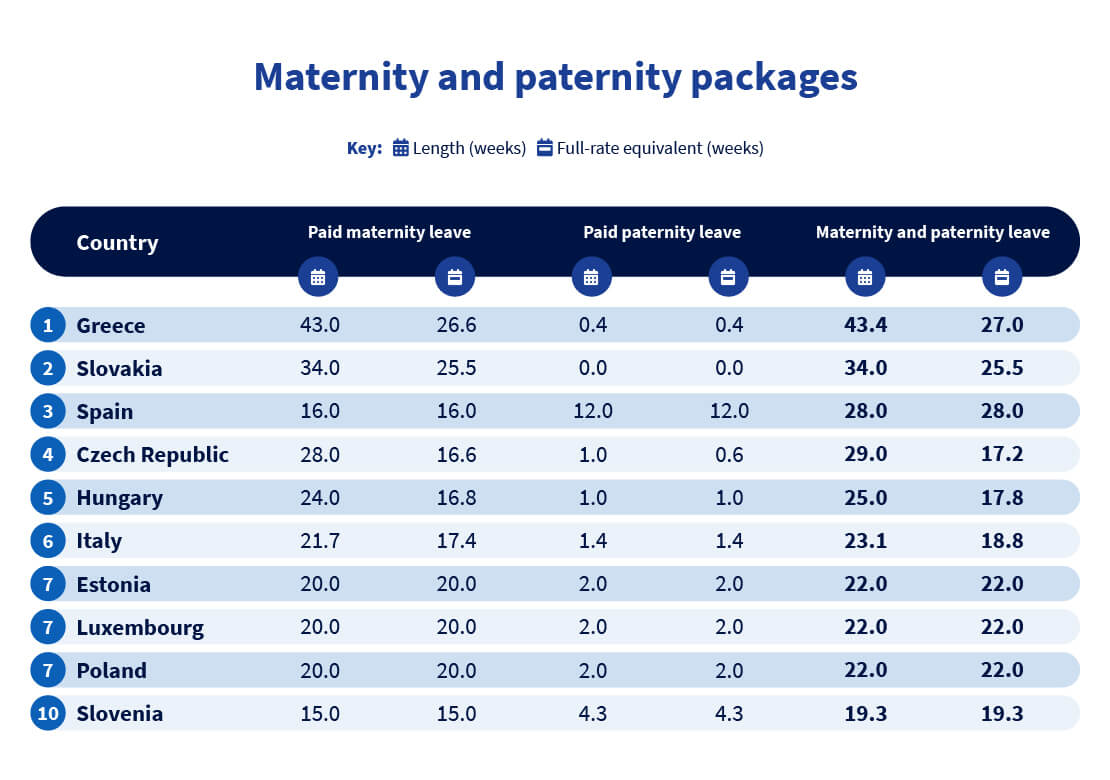
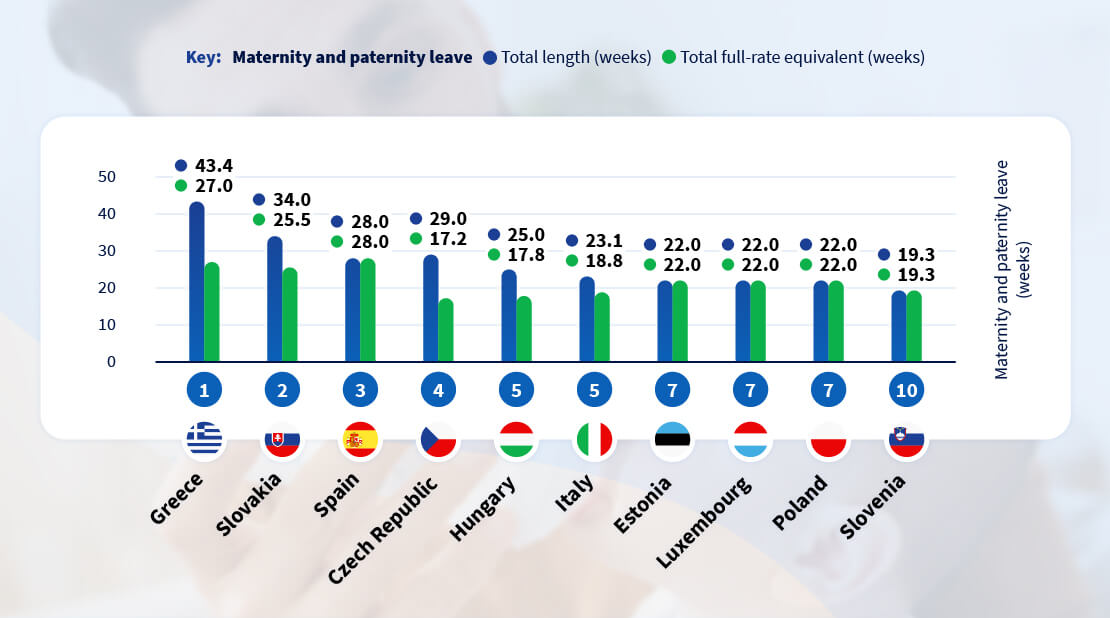
When looking at both maternity and paternity packages offered, Greece came out on top. The country offers 43 weeks’ leave to mothers with over half of that time paid at full-rate equivalent. It is due to the maternity offering that this country has come out on top, as it does fall short for paternity leave at only 0.4 weeks with 100% of this paid at full-rate equivalent.
In second position is Slovakia, which offers 34 weeks of maternity leave with 25.5 weeks at full rate pay. However, when it comes to paternity leave there’s no obligation for companies to offer this to expectant fathers.
Taking third is Spain, offering 16 weeks paid maternity leave and 12 weeks full-rate paternity leave. Although not at the top of the rankings, Spain offers leave to both new parents.
There are several factors to consider when giving birth to ensure it’s a memorable and magical experience when bringing your newborn child into the world. In Australia, a popular choice is opting to go through the private health system. If you’re interested in taking this approach, a great place to start your journey is by comparing your options for health insurance. This way, you can ensure you’re covered for any unexpected costs, which can give you one less thing to think about.
Health insurance policies can cover a variety of different birth-related things. For example, some hospital policies cover costs associated with pregnancy and other birth-related services (provided you’ve served all applicable waiting periods). Some may even pay a benefit towards midwife-assisted deliveries at home, if that is an approach you’re interested in taking for your childbirth.
Extras policies can also support your journey, in the form of classes, courses and consultants for before or after the birth. This could include antenatal classes, pre and postnatal consultations, lactation consultations and similar practices.
Whatever elements of pregnancy support sound useful for your particular experience, it’s important to compare your options for health insurance to ensure you find a policy that is best suited to your personal circumstances.
To determine the best places to give birth worldwide, each OECD country was analysed on the following factors, giving each one a normalised score out of ten for each factor, before taking an average of these scores for our overall ranking.
Data for the year 2019 was analysed, due to this being the most accessible data across the majority of countries (alternatively the latest data available was used).
Colombia and Costa Rica were removed from the overall rankings due to a lack of available data for a number of factors.
Monetary figures were converted from local currencies to Australian dollars using XE on 22/08/2022 and 23/08/2022